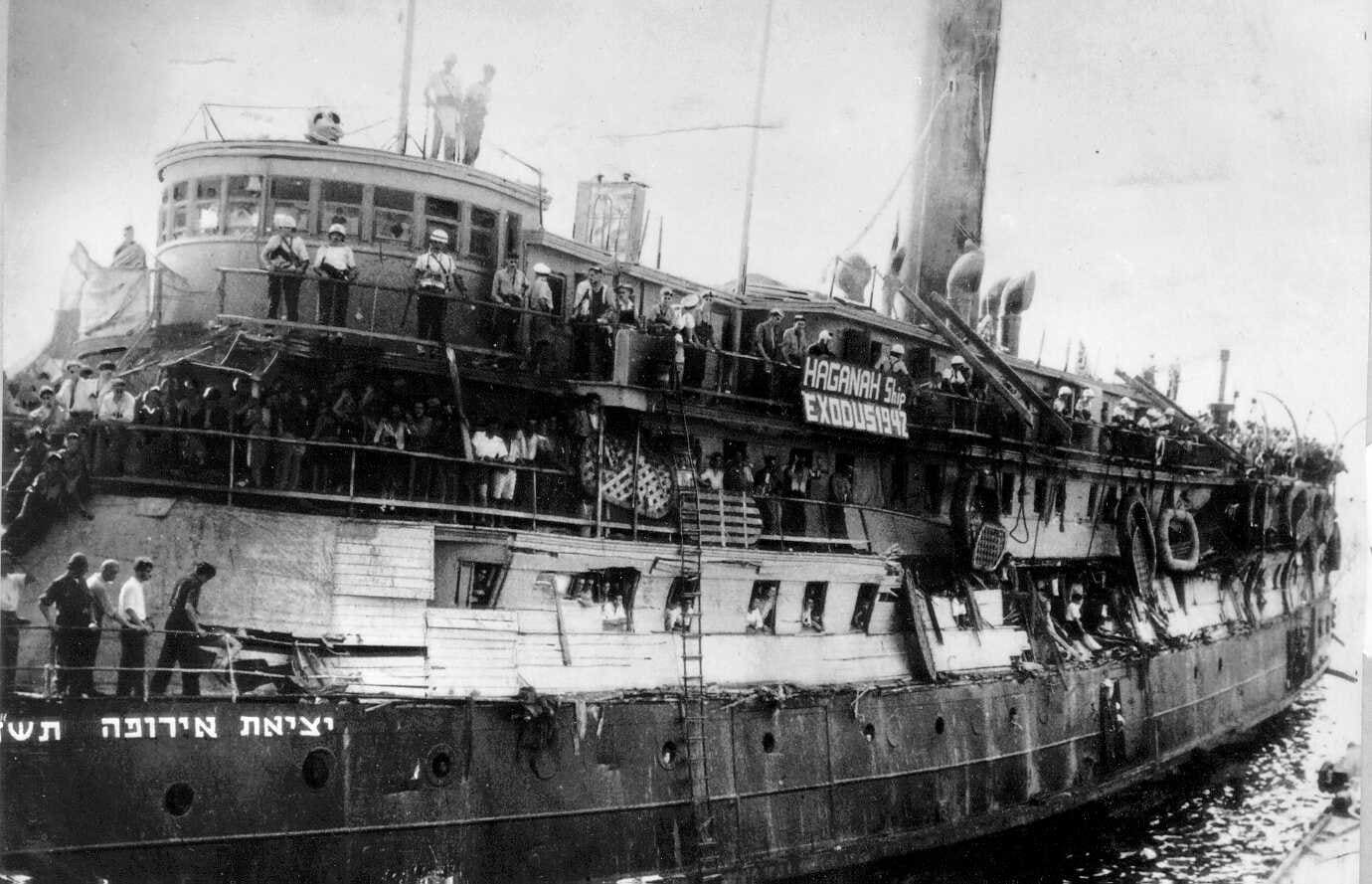Land of My Birth – Sixty years ago, on the eve of Rosh Chodesh Av 5707 (1947), an immigration ship by the name of “Leaving Europe 5707” (also known as “Exodus 1947”) arrived in Eretz Yisrael. This was a fairly small ship that the Haganah had bought from US Navy surplus, and 4,500 refugees from Europe had been packed into it. As soon as the ship left France British warships began to follow it, with a fighter plane flying overhead at all times.
Any reasonable person could see that this was not going to be a fair fight. It was clear that the “illegal immigrants” would be able to use only hand weapons, in order to avoid giving the British an excuse to use live ammunition, which might have led to a terrible slaughter. Here is how the struggle was described by Aharon David Kurtz (Adar):
“We began our preparations for a `battle` against seven British destroyers. Our small and creaky vessel, when compared to their warships, clearly demonstrated the great par between the forces, giving us the feeling that ‘we were like grasshoppers… in their eyes’ [Bamidbar 13:33]. But we still did not say, ‘Let us find a leader and return to Egypt’ [14:4]. We continued to fortify our positions and to prepare to fight back, in order to show that the Jews were not willing to give up like sheep being taken to slaughter… This was a battle of cans and jars against jets of salt water, tear gas, and clubs in the hands of British soldiers. We realized that this would be a demonstration and not a battle, but it was still important because it showed our position and our mission, while it was also fraught with mortal danger. Some of the immigrants paid with their lives for their part in this event.”
The struggle took place Thursday night, Rosh Chodesh Av (18 July), and it lasted several hours. Before the Exodus reached the territorial waters of the land, the British attacked it several times. Each time, they attached two destroyers to the ship and squeezed it, while British soldiers pounced on the passengers. It took a very long time to take control of the ship, because the people fought with dedication and perseverance. In the end, the order was given to surrender, because the attacks of the destroyers had cracked the hull of the Exodus, and water began to leak in and was about to sink the ship. Two passengers and one Jewish crewman were killed and about thirty were injured. All the others were transferred from the damaged ship to expulsion boats, which immediately became floating prisons. The people at least had the privilege of seeing the land from afar, as Kurtz continues to relate:
“We saw Haifa, our eyes looked at the Carmel Mountains, and we couldn’t stop looking. The verses in Melachim about Eliyahu opened up before me, and I imagined seeing him there, high up, on the top of the mountain, acting zealously to protect G-d`s honor… We were given a few hours in which we could see the mountain and dream about redemption… Why does Eliyahu just sit there and not come down to rescue us? Is he busy trying to bring rain in the month of Av? … At the end of our thoughts about the verses, Eliyahu disappeared from the Carmel, to be replaced by the ‘kalaniot,’ the British paratroopers with their red berets.”
Everybody was sure that they would be sent to Cyprus, as usual. But then it turned out that they were being sent back to France, where they arrived on the fast day of Tisha B`Av. And the worst thing was that the depressing journey ended on German soil.
The world media concentrated on the plight of the Exodus and its struggle to bring the refugees of the Holocaust to their land. The pictures of the mighty British army fighting refugees who wanted a safe haven were published all over the world. This story had a tremendous impact, leading many to identify with the cause and with the need to establish a Jewish state which would be able to absorb the refugees.
The Haganah, which planned and executed the entire journey of the Exodus, was able in the end to bring the expelled refugees back to settle in Eretz Yisrael.
Source: Aharon David Kurtz (Adar), “From Ashes to Renewal” and others. Reprinted with permission from Zomet Institute (www.zomet.org.il).
The words of this author reflect his/her own opinions and do not necessarily represent the official position of the Orthodox Union.



